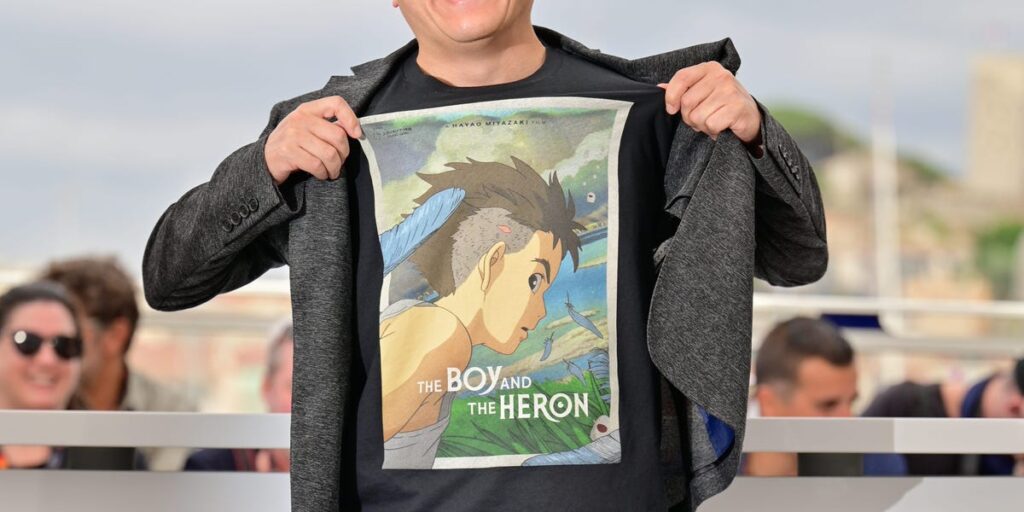OpenAI is getting overwhelmed with photo creation prompts in the style of Studio Ghibli films — and so is the guy who helped popularize the craze.
Studio Ghibli is a Japanese animation studio known for films with vibrant animation styles like “Spirited Away” and “My Neighbor Totoro.” Users on X flooded the service this week with AI-generated images in the style of Studio Ghibli films.
Grant Slatton, a software engineer in Seattle, helped popularize the “Ghiblified” AI photo edit trend. In a post on Tuesday afternoon, hours after OpenAI launched upgraded image-generation tools, he shared a photo on X of his family and dog at the beach in the animated style, captioning it: “tremendous alpha right now in sending your wife photos of yall converted to studio ghibli anime.”
Slatton is not the first person to use AI to create anime-style imagery, of course. But his Tuesday tweet seems to have been instrumental in the growth of the current wave. The retweets and replies quickly rolled in as other users followed his lead. As of writing it has 42,000 likes and almost 27 million views, and he has been bombarded by messages from X users about their own attempts, he told BI.
“It’s the single most net-positive day I’ve ever seen on Twitter,” he said. “I got hundreds of DMs and replies telling me their spouse or kids or grandparents loved the pictures.”
OpenAI CEO Sam Altman joked on Thursday that the company’s servers were “melting” after ChatGPT users flooded the service.
“we are going to temporarily introduce some rate limits while we work on making it more efficient,” Altman said in a post on X, formerly known as Twitter. “hopefully won’t be long! chatgpt free tier will get 3 generations per day soon.”
Altman added that it’s been “super fun seeing people love images in chatgpt.”
OpenAI began blocking some requests for Ghibli-style content on Wednesday night after deciding to ban “generations in the style of individual living artists,” the company previously told BI. ChatGPT does allow for generating images with “broader studio styles,” the company said.
“Our goal is to give users as much creative freedom as possible,
a spokesperson said. “We continue to prevent generations in the style of individual living artists, but we do permit broader studio styles—which people have used to generate and share some truly delightful and inspired original fan creations.”
OpenAI did not respond to a follow-up question from BI on Thursday afternoon about why some tiers of GPT users are still able to generate the images.
Slatton had previously made an animation-style photo of his family in December 2023, but the DALL-E model at the time required a “painstaking” process of describing exactly how he wanted it to look. But ChatGPT generated the new photo with a simple prompt of “convert to studio ghibli please,” he said.
“It does it as easily as translating English to Spanish,” Slatton told BI.
Slatton said the response to the post has been overwhelmingly positive with even some people who would normally be anti-AI art posting photos of themselves “Ghiblified.”
Users who haven’t been able to access the feature have also DMed him “heartwarming” requests with their family photos, he said, adding that he “probably did over 100” photos.
A backlash quickly followed the Ghibli-edit craze. Questions have been raised about the ethics and copyright implications of mimicking a specific artist or studio’s style — issues that have bedeviled the artificial intelligence industry for years.
A clip from a 2016 documentary interview with Mizayaki also went viral, in which the director watches a zombie-esque 3D animation with disturbing movements produced by an artificial intelligence model.
“I can’t watch this stuff and find [it] interesting,” Miyazaki said, citing the experience of his friend with a disability and mobility issues. “Whoever creates this stuff has no idea what pain is whatsoever. I am utterly disgusted. If you really want to make creepy stuff, you can go ahead and do it. I would never wish to incorporate this technology into my work at all. I strongly feel that this is an insult to life itself.”
Some X users have interpreted his comments as a blanket denunciation of all AI art, though others disagree. “I interpret this as him being opposed to artificial life, artificial emotions, artificial pain,” Slatton said. “Whereas the ghiblification trend is an enhancement of real joy.”
Read the full article here


